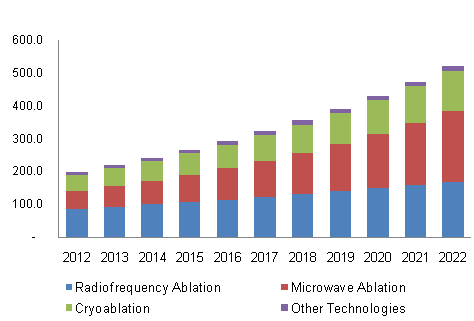Landscape

One of the many positive outcomes associated with western life is the extension of our longevity (Figure 1). However, with this benefit, comes an unfortunate increase in disease and debilitating physical pain. This is a bittersweet relationship, we get to experience our loved ones longer, travel, take up that hobby, etc., with the likelihood of some physical ailment with time. As a result of this trend you would expect to see an increase in health expenditures as the population ages (Figure 2). This puts a tremendous burden on our medical system in addition to driving up cost. Fortunately, we have a robust and dynamic well-funded private enterprise landscape of companies and researchers that are continuously finding solutions to counter these obstacles. The key to addressing two critical areas that affect this trend, cost and recovery, is implementing non-invasive techniques that minimize hospitalizations and tissue damage while getting the patient on their feet as quickly as possible. One of these methods, ablation, has been very effective at meeting this challenge.

What is Ablation?
Ablation, as it relates to the human body, is the removal of and or destruction of unwanted tissue by means of conducting a high frequency / high power signal through an electrode to the location of interest.
This technique is primarily used in three areas, oncology (cancer and tumors),

cardiology (arrhythmias) and orthopedics (pain management). Each application has specific requirements as it relates to power, frequency and probe design. With oncology the probe might be directly inserted in the tumor with high power levels depending on the size of the mass to be removed (Figure 3). When treating arrhythmias

(Figure 4.), the probe is inserted in a major artery and routed to one of the cambers of the heart where energy is focused and directed to the abnormal tissue responsible for the irregular electrical signals. With cardiac ablation the navigation, power and directivity are critical as not to cause irreparable harm to the heart muscle and electrical system. Ablation has been highly effective in pain management (Figure 5.) where the probe is inserted near an irritated nerve thereby destroying the nerve fiber.
Ablation Methods

There are two competing electromagnet ablation technologies radiofrequency (RFA) and microwave (MWA). As you might have guessed, the primary difference between these approaches are the operational frequencies, RFA (350-500kHz) and MWA (.300-300GHz). The functional differences relate to the transfer of energy from the probe to the tissue being targeted. With RFA the heat generated is produced at the probe tip by completing an electrical circuit through the probe and grounding pads placed near the treatment site and is dependent on the impedance of the surrounding medium (tissue). MWA generates heat at the treatment site by molecular friction of the tissue inducted by theelectromagnetic field generated by the probe, like a microwave oven. MWA approach simplifies the procedure setup however requires a cooling system to reduce the heat generated at the probe. Currently most commercial applications for MWA are in the range of 900-2500MHz. The ablation growth is expected to continue with MWA taking market share from RFA (Figure 6).

Basic System Design MWA
Besides the user interface and probe cabling, a fundamental element of this system is the microwave signal generation and power management. A typical design will include a signal source possibly a PLL or synthesizer, depending on frequency resolution and range. Followed by pre-driver amplifier, filtering, gain control loop, driver, final PA and output protection circuitry. The design of the signal source is critical to the safe and consistent operation of the ablation system, specifically power control and thermal management. A key feature in the power control loop is output VSWR monitoring; VSWR is a measure of how effectively the power is being delivered to the probe. In order to properly regulate the energy applied to the treatment sight, it is imperative to know if the power is being reflecting towards the source or transferring to the load (probe). As mentioned, thermal management is fundamental; proper PA topology and device selection will determine efficiency and thermal distribution. NuWaves has extensive experience in high power RF / microwave source designs and manufacturing. With several initiatives in the ablation space NuWaves is well positioned to participate in this exciting and critical technology that will continue to transform the medical industry.

References
– Figure 1 – https://www.cdc.gov/nchs/data-visualization/mortality-trends/index.htm
– Figure 4 – https://www.mayoclinic.org/tests-procedures/cardiac-ablation/about/pac-20384993
– Figure 5 – https://mayfieldclinic.com/pe-rf_ablation.htm
– Figure 6 – https://sites.google.com/site/healthcareindustryinsights/tumor-ablation-market
About NuWaves
NuWaves RF Solutions is a premier supplier of RF and Microwave solutions for Department of Defense (DoD), government, and industrial customers. An RF engineering powerhouse, NuWaves offers a broad range of design and engineering services related to the development and sustainment of key communications, telemetry and electronic warfare systems, as well as a complete line of commercially available RF products. NuWaves’ products include wideband frequency converters, high-efficiency and miniature solid-state power amplifiers and bidirectional amplifiers, high intercept low noise amplifiers and miniature RF filters. NuWaves RF Solutions…Trusted RF Solutions™.



Comments are closed